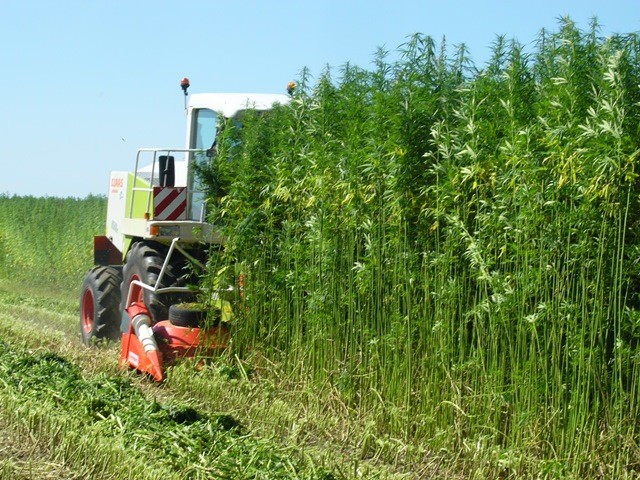Medical Marijuana, Hemp
Confusing Marijuana and Hemp
Even in today’s modern society, there exists a lot of confusion around the different cannabis species. This is largely evident when we look at the comparisons between marijuana and hemp. This is an area where there really should not be any comparison to speak of, other than they are both parts of the cannabis plant.
In this piece we will examine where both marijuana and hemp originate from, their major uses, and why people often confuse cannabis species. At the end of the piece, you should have an improved knowledge around the history of cannabis, and be completely clear on the differences between these particular species.
The Fundamentals of Hemp
Hemp is vastly different from marijuana and refers to a genus of cannabis plant which has negligible levels of THC when compared with marijuana. There is historical evidence to show that hemp was used as far back as 8,000 BC and the plants versatility and toughness have played a key role in the development of many essential products for generations.
These products include use in ropes, and other fabric materials which have progressed to being featured in a vast array of products in the modern era. These include foods, lotions, and others which we will discuss later.
Although laws ultimately vary from state to state and country to country, hemp is widely classified as legal for use so long as the THC content, which is already negligible, falls below a certain threshold. IN some jurisdictions, this threshold will be o.2% THC, whilst in others, the threshold will be 0.2% THC content. (THC is the psychoactive component which produces a high in marijuana).
So, having been around for thousands of years, and been referred to as essential for economic growth and prosperity by George Washington, it is quite safe to surmise two things from the foundations of hemp in society.
You certainly cannot achieve any psychoactive effects from consumption of hemp-related products to reach anything close to the high experienced with marijuana, and hemp has been a vital element and continues to be for many products within a range of both traditional and modern industries.
The Fundamentals of Marijuana
Marijuana also has a much more extensive history than many people realize. It has been around again for thousands of years, with a variety of stories emerging from Asia since ancient times. Marijuana from the outset contains a much higher level of THC (5-35%) than THC. It is this high level of THC which creates the “High” effect for users.
It is more difficult to grow, and this species requires much more controlled and careful cultivation than hemp. It was used for pharmaceutical purpose to great acclaim since its introduction to the United States until as late as the 1930s when the government pushed a view of marijuana as an addictive substance with little to no medicinal use, even though its medical use cases, especially in the areas of pain relief have been widely documented throughout thousands of years.
This remained the case until recent years when a global push for legalization has ensued. This push has facilitated great progress in the legalization of marijuana for both medicinal and recreational use throughout the world.
Marijuana is now completely legalized in several US states as well as Canada, and decriminalized in many others as people continue the journey toward liberation and complete legalization of marijuana throughout global society. In many ways, it is this legalization which has brought about the confusion between hemp and marijuana when considering the legal status and use cases. This has ultimately opened the door to discussion and enlightenment on the issue for many.
Why do People Confuse Hemp and Marijuana
The confusion between hemp and marijuana contributes to for a variety of reasons. The overriding reason which exists today, especially from those who have never engaged the use of either product is that both products are the same. That is, that both marijuana and THC are used for the purpose of inducing a bodily high. The cause of this opinion is simply a lack of awareness. In fact, the two are in stark contrast. Marijuana can induce a high, but hemp absolutely cannot and is used in a variety of practical products.
The second major reason for the confusion is that during the 1970s war on drugs in the United States, hemp was unintentionally misclassified, along with all other types of cannabis at the time, and declared a schedule I controlled substance. This dealt a death blow to the hemp industry which had already suffered massively from being included in the marijuana tax act of 1937.
Since the beginning of the legalization of marijuana in recent years, people have started to become more curious of the cannabis plant overall, and this has led to a form of realization and re-education which has seen very positive progress for both products. The government continues to remove barriers to hemp products, making it easier for importers and cultivators to restart an industry which was once thriving.
The Use Cases of Both Species
The variety of use cases throughout both species is extensive and varied. That said, these use cases probably could not be any more different. In times gone by, hemp would be used in many day to day and industrial products. This includes ropes, fabrics, building materials, and foods. The positive properties of hemp seeds, although a modern-day superfood, were actually realized in China and India thousands of years ago.
Modern uses include as a highly effective biofuel, hempcrete as a strong and environmentally friendly alternative to wood, and the entire CBD industry which has exploded with fantastic and healthy CBD products which can benefit both your body and mind.
Marijuana, of course, is prized mainly for its medicinal and recreational use cases. Whilst of course, the recreational uses speak for themselves as being highly fun, safe, and enjoyable, medicinal use has also been incorporated in ancient medicine for centuries.
The potential for medicinal marijuana is just at the beginning of its newly resurgent journey, but the places where it could reach are amazing. The species has already shown great results in pain relief and anti-anxiety issues, with benefits purported to extend as far as a variety of immune, mental, and physical diseases. With a top quality product from the correct supplier, the use cases and the positive impacts of marijuana on a range of medical issues can be astounding.
How to tell the Difference between the Two
There are a number of key differences between both hemp and marijuana which can assist you in easily telling the difference between the two. These range from the very simple physical appearance of the plant to the more complex internal chemical compositions which are active within them.
Appearance
In this category, there is often a significant difference in the plants which can be best observed from a distance. Marijuana leaves are typically much broader and more densely packed on a shorter tree. This means that marijuana from the indica species often appear on shorter, wider plants.
Hemp, on the other hand, contrasts in appearance. The leaves are usually much thinner and typically have fewer leaves toward the base. This gives the hemp plant the appearance of being much taller and skinnier than its high THC counterpart.
Chemical Composition
As outlined previously, this is another key difference in the two. Whilst marijuana has a THC content of often between 5-35%, representing more than sufficient amounts of the psychoactive component to result in a bodily “high”, hemp does not come close to these levels.
In the case of hemp, THC levels are observed at a maximum of 0.3% THC. This is far below the required threshold to induce a bodily “high”. This is a major part of the reason why hemp producers feel greatly labored by the misconception and labeling of hemp together with marijuana as the same product.
Growing Conditions
Another area which differs greatly between the two is the growing or cultivation environment which is required. Marijuana requires a carefully controlled cultivation environment to grow correctly. One growth cycle can typically be 60-90 days and the conditions should be kept warm and humid with an adequate amount of spacing between the plants. This is why marijuana is often best suited to grow indoors.
Hemp required much less monitoring and control to grow effectively. The more rugged nature of the plant means it can be effectively grown in a variety of climatic conditions and without the need for abundant spacing between the plants. One growth cycle will typically last between 100-120 days.
Conclusion
From the review, we can clearly see that these plant varieties, although often confused with each other, are actually vastly different. With this knowledge foundation, we can also better appreciate the use cases of both products and the importance of quality in both cases as well as the deep history associated with both products. As popularity continues to explode, there are always new and exciting cannabis related topics to further your learning experience.


